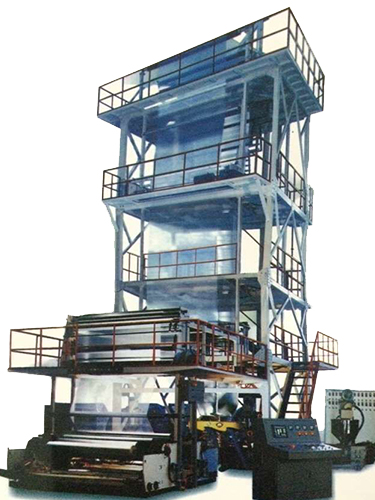Dalian Youyan Plastic Machinery Co., Ltd.
Couplet: Feng Manager
Phone/fax:086-0411-86260347
Hand:18624289888
13604263838
Mail box:21272059@qq.com
Network access:www.dlyouyan.com
Address: Chinese Lushunkou District of Dalian City, the three streams town (take Tuchengzi Dalian to Lushun Road westbound vehicle airport about 200 meters in front of about 100 meters)
With the development of society and the increasing demand for product quality, the market demand for blown film units is also constantly increasing. Manufacturing enterprises of blown film units need to continuously improve product quality and technological level to meet market demand. At the same time, users also need to strengthen their understanding of blown film units and choose equipment that suits their needs to improve production efficiency and product quality.
The blown film unit has the advantages of high production efficiency, low production cost, and stable product quality. It can produce plastic film products of different specifications and functions, and is widely used in food packaging, pharmaceutical packaging, agricultural covering film, building materials packaging and other fields. With the development of the plastic packaging industry, blown film units are constantly being updated and improved, constantly improving production efficiency and product quality to meet market demand.
Types and characteristics of molds for Dalian blown film unit
Spiral core rod type die: This type of die has a spiral core rod inside. The plastic melt flows along the spiral channel in the mold head, which can achieve a more uniform distribution of the melt in the circumferential direction. Its advantage is that it can effectively improve the thickness uniformity of the film, especially suitable for producing high-quality and high-precision films, such as optical films or high-end packaging films. For example, in the production of high transparency films for electronic product packaging, the spiral core rod die can make the optical properties of the film more consistent throughout.
Hanger style mold head: Its internal flow channel shape is similar to a hanger. The melt splits from the center to both sides, and then converges and extrudes at the die outlet. The advantage of this type of die is that it has a wide range of width adjustment, which can adapt to film production with different width requirements. Moreover, the residence time of the melt in the mold is relatively short, making it suitable for processing thermosensitive plastics. For example, in the production of wide width agricultural greenhouse film, the hanger type mold head can flexibly adjust the width as needed, while avoiding the performance degradation of the plastic due to prolonged heating.
Lotus petal mold head: Its structural feature is that the mold head outlet has a structure similar to lotus petals. This type of die can generate a special melt flow pattern, which improves the surface quality of the film, such as making the film surface smoother. At the same time, it also has good applications in the multi-layer co extrusion blown film process, which can make the bonding between each layer tighter and improve the overall quality of the composite film.
The blown film unit, also known as the blown film production line, is an equipment used for producing blown film. The blown film unit is mainly composed of extruder, die head, cooling roller, traction roller and other components. Its working principle is to melt and extrude plastic particles, shape them through a die, then cool and shape them through a cooling roller, and finally stretch them through a traction roller to obtain the desired film product.
The blown film unit is usually composed of components such as extruder, die head, cooling roller, traction roller, and coiler. The extruder is the core component of the blown film unit, whose main function is to heat and melt plastic particles, extrude them into the mold head through a screw, and form a uniform melt flow. The die head is a key component that determines the thickness and width of the film, and different specifications of film production can be achieved through the design and adjustment of the die head. Cooling rollers and traction rollers are mainly used for cooling and stretching films, ensuring the flatness and uniform thickness of the film. The coiler is used to roll the produced film into finished products such as rolled film or bagged film.

